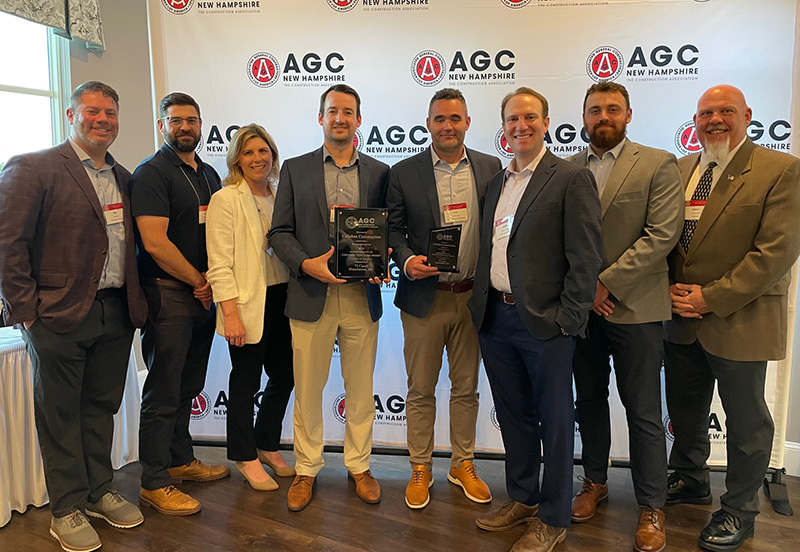DiCicco, Gulman’s annual survey shows A&E firms achieve double-digit profits in 2015
 Chad DaGraca, DiCicco Gulman & Co.
Chad DaGraca, DiCicco Gulman & Co.The majority of architecture and engineering firms saw their top and bottom lines grow during 2015, marking six years of recovery since the great recession. DCG’s annual survey benchmarks financial performance and other key indicators based on input from over 40 architecture and engineering firms throughout the Northeast. The survey results provide insight into firm performance over the last five years, based on a variety of factors.
Profitability Profitability in 2015 for architecture firms dipped from 11.3% last year to 10.5%, while engineering firms experienced an increase from 10.8% to 12.4%. Three key areas that influence a firm’s bottom line are average achieved billing rate, labor costs, and overhead rates. The average achieved billing rate measures how effective firms are at capturing and collecting the value they provide. In 2015 this was down 1.6% to $111.80 for architecture firms and up .96% to $120.43 for engineering firms. When asked about raising bill rates, two-thirds of surveyed firms raised rates in 2015, and the majority had plans to raise rates again in 2016.
 David Sullivan, DiCicco Gulman & Co.
David Sullivan, DiCicco Gulman & Co.Market Forces A&E firms commented that attracting and retaining talent is a top challenge. The average turnover rate was 15%, (up from 11% in 2014). The competition for talent has put upward pressure on wages which must be recovered to maintain healthy profit margins.
The commoditization of certain design services, intense competition for projects, and increasing standard of care expectations are market forces that make balancing fee increases with rising labor costs a challenge for some firms. Looking closely at projects’ billing multiples can help firms determine how effectively jobs are priced and managed.
In 2015, the average billing multiple for architectural firms was down to 3.10 from 3.28 in 2014 and stayed at an even 3.07 for engineering firms. Analyzing a project’s billing multiple throughout its lifecycle can increase scope awareness, lead to more timely change orders and additional fees, which can improve project profitability.
Cost Control A firm’s overhead rate measures the costs incurred to support project labor and operate the firm. Comparing current results to historical trends and industry benchmarks can help firms evaluate the allocation of resources and effectiveness of the current operational structure.
It is important for firms to evaluate whether bill rates and project fees are sufficient to cover changes in overhead costs.
In 2015, the average overhead rate was down for both architecture and engineering firms. Architecture firms saw a decrease from 181% in 2014 to 175% in 2015, while engineering firms showed a decrease from 174% to 164%, indicating both A&E firms continue to focus on controlling costs.
Utilization Rates Utilization indicates how firms are managing their staff by measuring time spent on projects relative to non-chargeable activities. In 2015, the utilization rate for architecture firms was up to 65.1% vs. 63.6% in 2014 while engineering firms showed a slight decline from 62.9% to 61.5%. High performing firms have a benchmark for utilization of 62% to 65% firm-wide. Monitoring utilization helps firm leaders determine optimal staffing levels which is critical to sustainability.
Working Capital The question of how much profit A&E firms should leave in the business is always top of mind at the end of the year. Understanding cash flow and looking at working capital can help inform that decision. In general, a working capital to net fee ratio of at least 20% is a strong indication that a firm has reinvested a sufficient amount of profits to fund its operations. Firms reaching that target can better manage the ups and downs of the economic cycle, and are more likely able to manage internal ownership transition successfully. In 2015, architecture firms showed 20% working capital to net fee ratio, while engineering firms showed slightly better at 24%.
Overall, results of this year’s survey show that A&E firms had a positive year and reached target benchmarks in most areas. The tone is upbeat. However, firms need to continue to be disciplined in their project management and attract work that will help them diversify the practice and expand their reach.
The complete Architectural Study and Engineering Report will be published later this summer.
David Sullivan, CPA, and Chad DaGraca, CPA, are partners with DiCicco, Gulman & Co. LLP, Woburn, Mass.
Nobis Group awards Robinson and Moreira STEM scholarships


The design-build advantage: Integrated interior design solutions - by Parker Snyder

The rise of incubators and co-working spaces: The latest in life sciences - by Matt Combs

Careers in Construction Month focus on training and safety - by Joe Camilo








